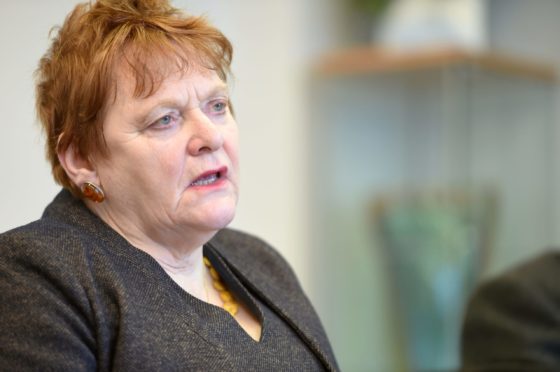Highland Council must put its skates on if it wants to benefit from the first phase of levelling up fund cash being released by the UK government to partly make up for the loss of EU money.
The treasury is making £4.8bn available in a Levelling Up fund, with Scotland’s share an estimated 9%, around £432m.
The council has been given until June 18 to bid into it with ‘shovel-ready’ projects, one for each of its three constituencies.
The three projects can be up to £20m each and should link together to make a significant difference to the region’s infrastructure.
They must prioritise town centre and high street regeneration, local transport, and maintaining cultural and heritage civic assets.
But Highland is at the bottom of the pecking order for the funds, having been placed in the lowest priority tier by the treasury.
Council officials say the positioning of the council as 324th out of 379 local authorities in the UK is due to lack of data, and they are commissioning research to lobby for more funds from the future Shared Prosperity fund.
In the meantime, they have been told by UK government officials that Highland’s position in the index is not a block for putting in bids, and are now in a race against time to put projects forward.
The council says bids are also being prepared for the £220m Community Renewal Fund, which is being used to inform the design of the Shared Prosperity fund, focusing on schools, business, communities and place and supporting people into employment.
The council can also submit one bid of up to £50m for transport schemes.
At a full council meeting this week, Infrastructure and environment boss Malcolm Macleod told councillors: “There are significant challenges throughout Highland in terms of roads infrastructure in particular, and it is suggested that a compelling bid could be submitted for the North Coast 500 route, tied in with an expansion of EV charging points and improvements to tourism-related infrastructure.
“The benefit of this project is that it will impact on much of the council area, address key council owned infrastructure assets, build on design work already undertaken and support the continued recovery and growth of tourism.”
In the north, the focus is proposed to be on Wick as a centre for regeneration, and encompass various interlinked projects such as infrastructure works on the Wick harbour outer seawall to attract further investment to the port, physical regeneration of the town centre and other active travel and environmental improvement projects.
Mr Macleod said: “For Inverness, Badenoch and Strathspey, focusing on the
maintenance and regeneration of cultural, heritage and civic assets has helped
identify a potential bid comprising Inverness Castle, Northern Meeting Park and
Bught Park facilities.
“It is also proposed to identify whether smaller environmental regeneration projects
relating to Aviemore and Nairn Links can be incorporated into the overall bid
submission package. ”
Council leader councillor Margaret Davidson has been engaging with UK government ministers and Highland MPs to present better data for the funds, ensuring that the metrics consider the unique circumstances of the region.
If the current metrics are used for the future UK Shared Prosperity Fund, the Highlands would stand to lose a significant level of funding on an ongoing basis.
Under EU funding, Highland received a total of £90m a year.
Mrs Davidson said: “We were shocked that Highland was not included in the priority areas and it is strange to say the least that a levelling up fund, ignores the area that is the most remote and rural in the country.
“However, I have had positive engagement with Ian Stewart, parliamentary under secretary of state at the Scotland Office and very much appreciate the assistance from our MPs.
“I am relieved that there is to be a consultation on the metrics to be used for the future UK Prosperity Fund and believe that ministers understand our concerns.
“We have commissioned further economic analysis which we shall make available to the UK Government.”
